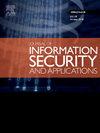Enhancing vulnerability detection efficiency: An exploration of light-weight LLMs with hybrid code features
IF 3.8
2区 计算机科学
Q2 COMPUTER SCIENCE, INFORMATION SYSTEMS
Journal of Information Security and Applications
Pub Date : 2024-11-30
DOI:10.1016/j.jisa.2024.103925
引用次数: 0
Abstract
Vulnerability detection is a critical research topic. However, the performance of existing neural network-based approaches requires further improvement. The emergence of large language models (LLMs) has demonstrated their superior performance in natural language processing (NLP) compared to conventional neural architectures, motivating researchers to apply LLMs for vulnerability detection. This paper focuses on evaluating the performance of various Transformer-based LLMs for source-code-level vulnerability detection. We propose a framework named VulACLLM (AST & CFG-based LLMs Vulnerability Detection), which leverages combined feature sets derived from abstract Syntax Tree (AST) and Control Flow Graph (CFG). The recall rate of VulACLLM in the field of vulnerability detection reached 0.73, while the F1-score achieved 0.725. Experimental results show that the proposed feature sets significantly enhance detection performance. To further improve the efficiency of LLM-based detection, we examine the performance of LLMs compressed using two techniques: Knowledge Distillation (KD) and Low-Rank Adaptation (LoRA). To assess the performance of these compressed models, we introduce efficiency metrics that quantify both performance loss and efficiency gains achieved through compression. Our findings reveal that, compared to KD, LLMs compressed with LoRA achieve higher recall, achieving a maximum recall rate of 0.82, while substantially reducing training time, taking only 20 min to complete one epoch, and disk size, requiring only 4.89 MB of memory. The experimental results demonstrate that LoRA compression effectively mitigates deployment challenges associated with large model sizes and high video memory consumption, enabling the deployment of LoRA-compressed LLMs on consumer-level GPUs without compromising vulnerability detection performance.
提高漏洞检测效率:具有混合代码特征的轻量级llm的探索
漏洞检测是一个重要的研究课题。然而,现有的基于神经网络的方法的性能需要进一步改进。大型语言模型(llm)的出现证明了其在自然语言处理(NLP)方面优于传统神经结构的性能,促使研究人员将llm应用于漏洞检测。本文重点评估了各种基于transformer的llm在源代码级漏洞检测中的性能。我们提出了一个名为VulACLLM (AST &;基于CFG的LLMs漏洞检测),它利用了抽象语法树(AST)和控制流图(CFG)派生的组合特征集。VulACLLM在漏洞检测领域的召回率达到0.73,f1得分达到0.725。实验结果表明,所提出的特征集显著提高了检测性能。为了进一步提高基于llm的检测效率,我们检查了使用两种技术压缩的llm的性能:知识蒸馏(KD)和低秩自适应(LoRA)。为了评估这些压缩模型的性能,我们引入了效率指标,量化了通过压缩实现的性能损失和效率收益。我们的研究结果表明,与KD相比,使用LoRA压缩的llm具有更高的召回率,达到了0.82的最大召回率,同时大大减少了训练时间,只需20分钟即可完成一个epoch,磁盘大小仅需要4.89 MB的内存。实验结果表明,LoRA压缩有效地缓解了与大模型尺寸和高视频内存消耗相关的部署挑战,使LoRA压缩llm能够在消费者级gpu上部署,而不会影响漏洞检测性能。
本文章由计算机程序翻译,如有差异,请以英文原文为准。
求助全文
约1分钟内获得全文
求助全文
来源期刊

Journal of Information Security and Applications
Computer Science-Computer Networks and Communications
CiteScore
10.90
自引率
5.40%
发文量
206
审稿时长
56 days
期刊介绍:
Journal of Information Security and Applications (JISA) focuses on the original research and practice-driven applications with relevance to information security and applications. JISA provides a common linkage between a vibrant scientific and research community and industry professionals by offering a clear view on modern problems and challenges in information security, as well as identifying promising scientific and "best-practice" solutions. JISA issues offer a balance between original research work and innovative industrial approaches by internationally renowned information security experts and researchers.
 求助内容:
求助内容: 应助结果提醒方式:
应助结果提醒方式:


